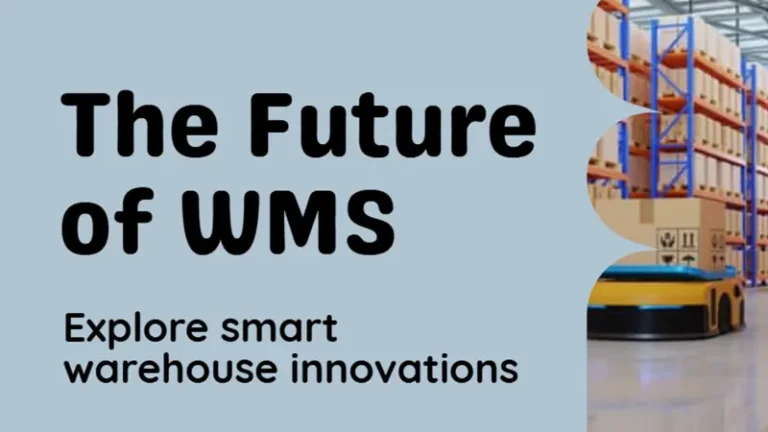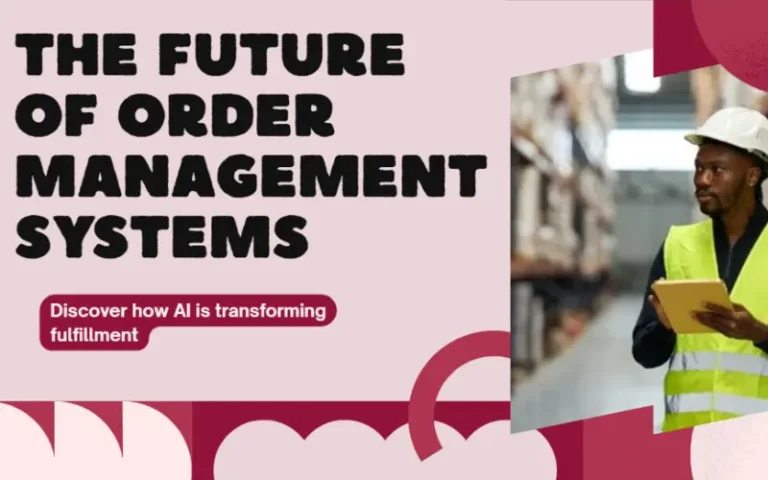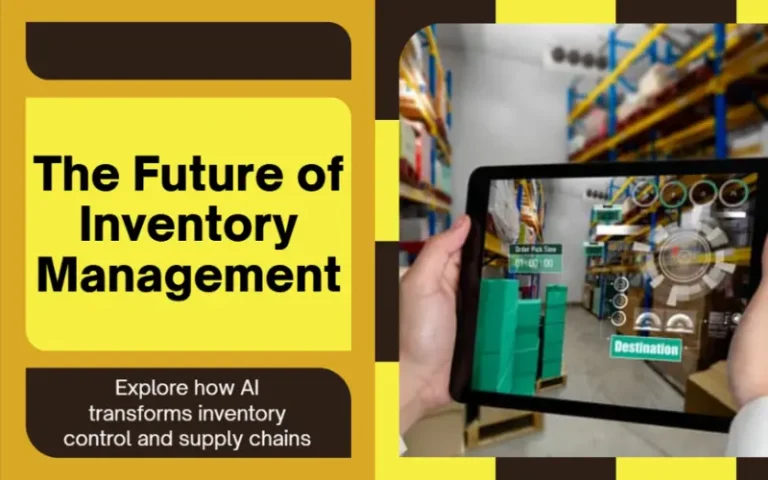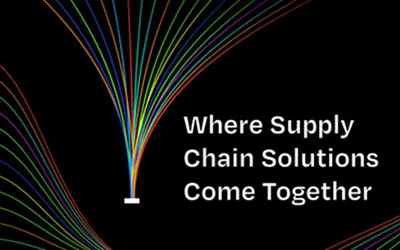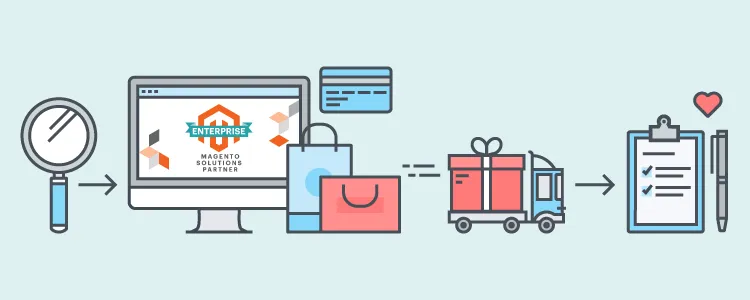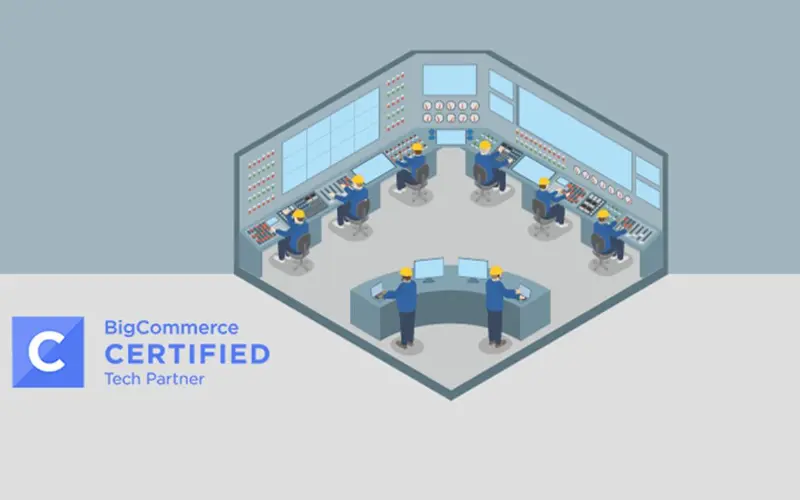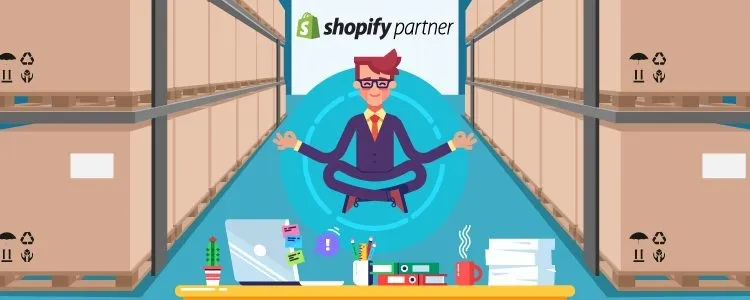Ecommerce Returns Fraud: Rising Threats and Loss Prevention Strategies
Returns fraud and abuse have escalated into a significant threat, posing substantial challenges for retailers attempting to maintain customer-friendly free return policies. This form of fraud ranges from minor deceptions to complex schemes, making it essential for businesses to identify and mitigate abusive practices without alienating legitimate customers. Understanding the types of returns fraud, who commits it, and implementing prevention strategies can help retailers minimize their losses while maintaining consumer trust and loyalty.
Types of Returns Fraud and Abuse
Returns fraud takes several forms, each impacting e-commerce businesses differently. One of the most common practices is lying about delivery, where individuals claim they never received an item, even though it was delivered. Fraudsters can retain the product and the refund by exploiting policies on lost shipments.Another frequent issue is fraudulent claims of damage, defects, or missing parts. Customers may falsely report a defect to secure a refund while keeping or reselling the product. Similarly, some buyers use “wardrobing”— purchasing clothing or accessories to wear them briefly before returning them. This is incredibly challenging for retailers in the fashion industry.
Returning empty boxes or different items entirely is also on the rise. Perpetrators may return a box with unrelated or worthless items, claiming it contains the original purchase. High-value electronics, luxury goods, and designer apparel are frequent targets, where returns often involve counterfeit items or used products. Furthermore, some customers keep items delivered by mistake, exploiting policies that may not require a return for the retailer’s error.
In addition to these behaviors, more severe fraud occurs with stolen merchandise returns and transactions using stolen or fraudulent payment methods. Some individuals attempt to return goods purchased through fraudulent credit cards, adding to retailers’ challenges. Employee fraud or collusion also contributes to the issue, with insiders manipulating the system to process unauthorized returns for personal gain or on behalf of others. The complexities of returns fraud require multi-layered strategies to detect, prevent, and manage such abuses effectively.
Slash Your Fulfillment Costs by Up to 30%
Cut shipping expenses by 30% and boost profit with Cahoot's AI-optimized fulfillment services and modern tech —no overheads and no humans required!
I'm Interested in Saving Time and MoneyTypical Profiles of Returns Fraud
Returns fraud occurs across demographics but shows some patterns. Studies indicate specific trends by gender, age, and income level, with fraud appearing in both high-income and lower-income brackets. Younger consumers, often with lower income and less established shopping histories, are more likely to engage in returns abuse, especially practices like wardrobing or bracketing (which is when multiple sizes or variants of the same item are ordered to return most purchases, which technically remains legal, but it creates significant operational strain on retailers). High-income individuals, however, may commit fraud on a larger scale, potentially exploiting high-value items and finding loopholes in luxury goods policies. Understanding these demographic patterns helps retailers tailor their prevention strategies to target the most prevalent forms of abuse within their customer base.Strategies to Curb Returns Fraud
Combating returns fraud requires a comprehensive approach that balances fraud prevention with the need for positive customer experiences. Clear return policies outlining the eligibility criteria for refunds in plain language and using exchanges and store credits are essential. Detailed policies help set expectations, minimize ambiguity, and limit avenues for abuse. Including specific stipulations, such as original packaging requirements, limited return windows, and proof of purchase for returns (such as providing the original Order Number), can deter fraudulent attempts without overly restricting genuine customers.Advanced fraud detection tools have become indispensable. Machine learning algorithms analyze purchasing and return patterns, identifying red flags like repeat returns without receipts, returns from different locations than the original shipping address, or multiple returns in short timeframes. These tools allow retailers to monitor abnormal behavior and intervene before fraud becomes costly. Additionally, some companies are adopting SKU-level data analysis to track trends for specific products and adjust return policies accordingly.
Retailers can also implement strategies that add a layer of verification for certain returns. For example, requiring photographs of damaged items or using unique serial numbers to verify high-value items can prevent fraudulent claims. Similarly, forcing returns to a physical store instead of online can reduce the likelihood of fraud, as in-store returns involve an extra layer of human oversight.
Other deterrents include offering store credits or gift cards instead of direct refunds, which keeps revenue within the business while reducing the monetary incentive for return abuse. For certain items, restocking fees can offset return processing costs and discourage unnecessary returns. Some retailers are also experimenting with date-certain delivery options to reduce claims about late or missing items, which often contribute to fraudulent refunds.
Leveraging AI and Automation in Fraud Prevention
Artificial intelligence (AI) offers cutting-edge solutions for identifying returns fraud. AI algorithms can sift through extensive datasets to flag suspicious patterns across metrics like purchase history, location, and return frequency. These insights enable retailers to preemptively identify potential fraudsters and apply stricter policies to accounts that exhibit high-risk behavior.Moreover, automated systems streamline the returns management process, minimizing human error and consistently enforcing policies. They can verify the integrity of a return by tracking product serial numbers or assigning unique IDs to high-value items. Integration with third-party data sources allows retailers to cross-reference transaction history, adding another layer of protection against fraudulent returns. Using AI and automation reduces operational strain while enabling retailers to implement scalable, data-driven fraud prevention measures.
Looking for a New 3PL? Start with this Free RFP Template
Cut weeks off your selection process. Avoid pitfalls. Get the only 3PL RFP checklist built for ecommerce brands, absolutely free.
Get My Free 3PL RFPThe Balance Between Fraud Prevention and Customer Loyalty
While implementing robust fraud prevention measures, businesses must remain cautious not to damage customer loyalty. Frequent return customers are loyal shoppers with higher lifetime value, so overly restrictive policies could alienate these valuable clients. Providing transparency in return policies and communicating the rationale behind certain restrictions helps maintain a positive relationship with legitimate customers.Personalizing return policies based on customer purchase and return history can foster trust. For example, loyal customers may receive extended return windows or expedited refund processing, while high-risk accounts may face tighter restrictions or be limited to store credit. This personalized approach allows retailers to tailor their policies without compromising fraud prevention goals.
Summary
Returns fraud is a complex challenge for the e-commerce sector, demanding a nuanced approach that combines policy enforcement, advanced technology, and demographic insights. As fraud techniques evolve, retailers must stay vigilant and proactive, implementing adaptive systems that address the risks associated with modern returns fraud.A successful fraud prevention strategy requires the right balance between security and customer satisfaction, ensuring that restrictive policies do not burden legitimate shoppers. By prioritizing transparency, adopting advanced technology, and continuously refining returns processes, retailers can mitigate losses from fraudulent returns while fostering a trusted shopping environment that encourages consumer loyalty. In the fast-paced world of e-commerce, strategic fraud prevention is not just a protective measure—it is essential for long-term success and profitability.
Learn more about using returns as a competitive advantage and increasing revenue and profitability accordingly.

Turn Returns Into New Revenue
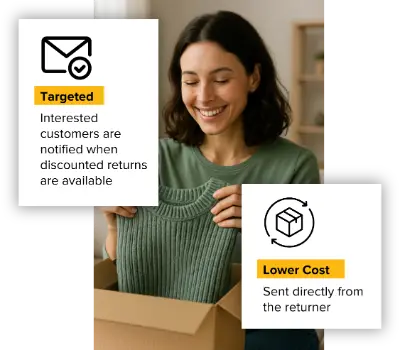
10 Ways AI Agents are Transforming E-commerce Order and Inventory Management Systems
In this article
 100 minutes
100 minutes
Artificial Intelligence (AI) Agents represent a revolutionary leap in technological innovation and will transform business across every sector. They are intelligent systems that understand language and can perceive, analyze, and act upon complex data and/or workflows. “Act” is the key word. AI Agents take autonomous action on your behalf to complete the task or achieve the desired outcome.
The e-commerce industry stands to benefit enormously from this new technology because it’s a remarkably competitive and often low-margin business that unequivocally depends upon efficiency, accuracy, and adaptability for retailers and brands to be successful.
Slash Your Fulfillment Costs by Up to 30%
Cut shipping expenses by 30% and boost profit with Cahoot's AI-optimized fulfillment services and modern tech —no overheads and no humans required!
I'm Interested in Saving Time and MoneyUnlike conventional generative AI that generates outputs, (i.e. recommendations, and/or a plan), from “prompts” entered by a user (such as ChatGPT, Claude, etc.), AI agents self-reflect and learn from their interactions, continuously improving their performance without constant human intervention. AI agents can complete tasks that would normally require multiple tools and different activities, and you don’t need to be a developer to create and optimize them. For example, an AI agent (or agents, plural) could build and book a vacation within a given set of limitations. Think of all the steps (research and reviews, cross-references) that a human must perform to complete the same common task. The only thing to keep in mind is not to ask each agent to do too many different things. Keep each agent “in their lane” for optimal results.
- Always-On Customer Service
AI agents don’t sleep, take a lunch break, or have a bad day. While customer service may be the lowest-hanging fruit and most easily implemented on this list, AI agents are available when your customers need them, regardless of time zone, and they can answer most of your customer’s questions and resolve most of their issues. Most importantly, they can be configured to hand off to a human when they cannot resolve the inquiry or when the conversation otherwise reaches a point where the business may want to speak directly with the customer, such as discount or refund requests. But they can indeed be employed to create replacement orders, cancel subscriptions, and adjust auto-ship frequency, among other things. - Best-in-Class Demand Forecasting
Predict demand with remarkable accuracy to optimize procurement and avoid overstocking and stockouts. Traditional approaches are often plagued by unsophisticated data analysis methods leading to bad assumptions, and thus, poor procurement decisions. But modern Inventory Management Systems (IMSs) use AI agents to analyze massive amounts of historical sales data, read real-time news feeds to consider market trends and identify supply chain disruptions, track inventory movements, plus any number of other data points of interest, to make intelligent, real-time forecasts in the context of existing inventory available across internal and external fulfillment centers. - Autonomous [Humanless] Procurement
Building upon demand forecasting, AI agents can automatically create Purchase Orders with vendors at precisely the right time based on requirements such as minimum order quantity, and also based on defined guard rails such as total spend, current and future cash flow expectations, and vendor lead times for prep and transit. The best part is that it’s all based on natural language processing so if you can explain it, it can be done without complicated diagrams or wireframes. - Optimize Distributed Inventory Strategies
Minimize final mile shipping cost by staging inventory closer to your customers. Split inbounds across fulfillment centers based on the regional demand forecasting models described previously to optimize placement and minimize the cost of transferring inventory between locations later. Further, use the technology to track the inbounds and update ETAs for the team accordingly. Amazon’s been doing it for years. Now SMB retailers and brands can take advantage of the same technology. - Lowest Shipping Cost by Design
E-commerce retailers and brands traditionally have humans use their experience to ship orders, (primarily because legacy shipping software hasn’t innovated in over 10 years). But that approach is notoriously error-prone and costs the company a ton of money that should be kept as profit, even if it’s done at the manager level. Modern multi-carrier shipping software removes the human and creates the optimal shipping label that will deliver the order on time, every time. And now, combining that intelligence with AI agents, Order Management Systems (OMSs) can get even more granular and monitor weather conditions along shipping lanes, and then re-route orders to fulfillment centers that are more likely to deliver them by the promised delivery date, preventing customer service inquiries such as WISMO (Where Is My Order?) and refund requests. - Remove Waste from Fulfillment Workflows
Automate critical but rote tasks that would otherwise need to be completed by a human (e.g. creating shipping labels). Why does a human have to pick and click to print a label? Change your people from processors into analysts and put them on the tasks that will grow the business. - Supercharge Returns Programs
Returns are painful, but a necessary evil for any e-commerce operation. It’s critical to manage returns effectively (especially for the highest return rate categories such as women’s apparel). Groundbreaking new returns technologies such as the Cahoot Peer-to-Peer Returns Solution are already eliminating returns by enabling the return to be shipped directly to the next customer, saving significant money and time. Now add an AI agent that can predict the likelihood that the returned item will be sold in the next 7 days, and you’ve supercharged your returns program! - Optimize Warehouse Layouts
New technologies such as Synkrato’s Warehouse Optimization System (WOS) – powered by AI and Digital Twins are emerging to help merchants create a virtual warehouse that mimics their exact space, inventory positions, equipment storage, window and door positions, etc. which can be used to make changes in the virtual world and determine the impact of the change before going through all the work to find out that it wasn’t going to work. Optimize warehouse layouts, inventory storage, and more. - Dynamic Pricing Strategies
Unified commerce systems can leverage customer data including products viewed, dwell time, shopping cart contents, previously abandoned carts, purchase history, returns history, and demographic data in real time to create tailored shopping experiences that align with individual preferences. AI agents can monitor competitor pricing along with inventory levels and sell-through rates, read mass quantities of e-commerce news feeds to assess market demand and availability and make real-time pricing adjustments that convert the sale while maximizing profitability and remaining competitive. These personalized interactions not only drive sales but also foster loyalty. - Driving Business Insights with Advanced Analytics
Because AI agents can analyze enormous datasets quickly, and because most merchants have ‘dark data*’ that they don’t even know about, AI agents have access to many more insights and can identify many more trends than retailers can even think about asking for. At least currently. For example, Sellers can evaluate supplier performance at a micro-level comparing negotiated agreements and SLAs to actual performance and events and use the data to negotiate better terms.*Dark data refers to the unused portion of an organization’s information collected and stored during their regular business activities but fails to be used for analytics, advancing business relationships, or direct monetization. It’s not uncommon for as much as 50% of a company’s data to be dark.
Looking for a New 3PL? Start with this Free RFP Template
Cut weeks off your selection process. Avoid pitfalls. Get the only 3PL RFP checklist built for ecommerce brands, absolutely free.
Get My Free 3PL RFPSummary
The transformative potential of AI agents extends beyond mere automation rules and logic trees. AI agents are redefining how e-commerce businesses approach inventory and order management, transforming these processes from reactive tasks into strategic capabilities. By leveraging advanced technologies, these systems can dig deep into the dark data and deliver precise forecasting, intelligent automation, and actionable insights that enhance operational efficiency unlike ever before. They’re intentionally more specialized than generic generative AI such that the language that is used and the context that is understood within a particular industry or vertical, results in a more reliable and relatable assistant compared to the ChatGPTs and Claudes of the world.
As e-commerce businesses become more fluent in these new technologies and embrace these advancements, AI will transition from being a competitive advantage to a foundational necessity. Companies that integrate AI systems effectively will not only streamline their operations but also build the agility needed to thrive and position themselves for long-term success.

Turn Returns Into New Revenue

In-House or Outsource Fulfillment: What’s Best for Your eCommerce Business
The decision to outsource fulfillment to a third-party logistics (3PL) provider can be a strategic move for e-commerce businesses. 3PLs expand your fulfillment capacity and can even give you a hands-free approach to fulfilling orders. However, selecting the right partner and managing the relationship effectively can be challenging. Many sellers have reported problems with their 3PL ranging from same-day cut-offs, SLA issues, difficulty reaching support, and disruptive management changes.
What if outsourcing your fulfillment to a 3PL or doing fulfillment out of your warehouse doesn’t necessarily need to be a binary decision? Merchants have sometimes tapped into the best of both worlds by doing both. We’ll explore that in today’s article.
What is the benefit of working with a 3PL?
Outsourcing fulfillment to a 3PL can offer numerous advantages for e-commerce sellers. Firstly, 3PLs possess the expertise and infrastructure to handle the entire fulfillment process efficiently and cost-effectively. They have access to state-of-the-art warehouses, transportation networks, and experienced staff, allowing them to optimize operations and minimize errors. Their operations are set to do general e-commerce fulfillment well, this could be a big benefit for sellers new to fulfillment.
Secondly, partnering with a 3PL can provide businesses with greater scalability and flexibility. 3PLs can easily accommodate fluctuations in demand, ensuring that orders are processed and shipped promptly, even during peak seasons. Having multiple warehouses is especially important for meeting customers’ fast delivery expectations. This frees up e-commerce sellers to focus on other core aspects of their business, such as marketing, product development, and customer acquisition.
Slash Your Fulfillment Costs by Up to 30%
Cut shipping expenses by 30% and boost profit with Cahoot's AI-optimized fulfillment services and modern tech —no overheads and no humans required!
I'm Interested in Saving Time and MoneyThe Challenges of Choosing a 3PL
The benefits of working with a 3PL is not without its downsides. Selecting the ideal 3PL involves careful evaluation and due diligence. Businesses often encounter several challenges in this process:
- Hidden Fees and Overcharging: Many businesses report being surprised by unexpected charges or higher-than-expected costs. It’s essential to obtain detailed pricing information upfront and be wary of hidden fees. Make sure to estimate your total cost of ownership when getting quotes from a 3PL. Blindly comparing rates across many 3PLs can also be misleading as fulfillment fees (and other line items) can include different things at different providers.
- Inventory Inaccuracies: Ensuring accurate inventory management is crucial for avoiding stockouts and customer dissatisfaction. Some 3PLs struggle with maintaining precise inventory records and sellers have reported losing inventory as a result.
- Communication Breakdowns: Effective communication is vital for a successful 3PL partnership. Businesses often encounter challenges in reaching customer support, receiving timely responses, and understanding complex pricing structures. Large, established 3PLs may find it difficult to provide personalized attention, and it can be challenging to get in touch with someone who can fully resolve your problems, such as storage fee errors or missing inventory in transit.
- Lack of Flexibility: 3PLs may be unable to accommodate specific business needs, such as custom packaging or specialized handling requirements, or even reasonable cut-off times. For example, one merchant reported that their 3PL had an 8 AM same-day cutoff, which is unacceptable for any business offering fast delivery.
- Management Changes: While not frequent, changes in management at a 3PL can bring major disruptions. This risk should be considered when selecting a partner.
Why should you not work with a 3PL?
While outsourcing to a 3PL can offer benefits, managing fulfillment in-house also has its advantages and disadvantages:
Pros:
- Greater Control: In-house fulfillment provides businesses with more control over their operations, including inventory management, shipping, and order fulfillment processes. This allows for better oversight and the ability to address customer questions and concerns more effectively.
- Potential Cost Savings: For some businesses, managing fulfillment internally can be more cost-effective, especially for smaller operations or those with unique requirements. For example, we have seen merchants that generate less than $1 million in annual sales and sell items for less than $10 often find savings when doing fulfillment on their own rather than outsourcing.
Cons:
- Scalability Challenges: Scaling up operations can be difficult, especially during peak seasons or periods of rapid growth.
Looking for a New 3PL? Start with this Free RFP Template
Cut weeks off your selection process. Avoid pitfalls. Get the only 3PL RFP checklist built for ecommerce brands, absolutely free.
Get My Free 3PL RFPHow to minimize risk when working with a 3PL?
To mitigate risks and ensure a successful 3PL partnership, consider the following strategies:
- Thorough Due Diligence: Conduct comprehensive research and reference checks before selecting a 3PL. This includes evaluating their reputation, experience, and client testimonials.
- Regular Monitoring and Audits: Conduct regular audits to ensure that the 3PL is meeting performance expectations and complying with agreements. This can include ordering a package to yourself periodically to assess packing quality and identify any issues.
Consider a Hybrid Approach
Sometimes the best method is to use both in-house and outsourced fulfillment. If you already run a warehouse for your e-commerce fulfillment, outsourcing can be used for extra capacity for your popular goods. This way you limit the “risk” of a 3PL being unfamiliar with your items by sending just a small set of SKUs. Or you can use the 3PLs to power fast delivery programs like Amazon Seller Fulfilled Prime, which can then be leveraged to offer fast shipping on all channels.
The downside of doing a hybrid approach is additional complexity in determining which warehouse to ship an order as most popular shipping software today is designed for single warehouse fulfillment. To minimize this downside, you can use fulfillment networks like Cahoot that have integrated software and fulfillment service solutions built for hybrid models.
Scaling Made Easy: Calis Books’ Fulfillment Journey
Learn how Calis Books expanded nationwide, reduced errors, grew sales while cutting headcount, and saved BIG with Cahoot
See Scale JourneyConclusion
Choosing the right 3PL and managing the partnership effectively is crucial for e-commerce businesses. By understanding the challenges, evaluating the pros and cons of in-house fulfillment, and implementing strategies to overcome common issues, businesses can establish successful partnerships that drive growth and improve operational efficiency.

Turn Returns Into New Revenue

ProMat 2025
In this article
 1 minute
1 minute
March 17-20, 2025 | Chicago, IL
The future of the manufacturing and supply chain industry starts at ProMat, where the brightest minds in the industry come together. In an industry that’s constantly evolving, you have to stay ahead of the curve, which is why ProMat brings together all the products, services, and know-how you need to compete in the world we now live in.
With over 1,100 exhibits, 200 educational seminars and four exciting keynote speeches, ProMat has everything you need to make your operations more resilient, transparent and sustainable.
Slash Your Fulfillment Costs by Up to 30%
Cut shipping expenses by 30% and boost profit with Cahoot's AI-optimized fulfillment services and modern tech —no overheads and no humans required!
I'm Interested in Saving Time and Money
Turn Returns Into New Revenue

Build an Efficient Supply Chain: 5 Obstacles to Overcome
Ecommerce is experiencing an extreme, extended boom that is showing no signs of stopping.
Thanks in part to the pandemic, online shopping is now ubiquitous. As of 2022, 93.5% of internet users have purchased something online.
But as ecommerce grows and more and more sellers make the jump online, the pains of profitable scaling present themselves much clearer.
One of the biggest differences from physical retail that ecommerce businesses face is the way in which they organize their operations. Simply put, ecommerce order fulfillment is much more challenging and costly than replenishing retail shelves.
When selling to customers, delivering the product can be where the rubber meets the road for a seller’s profitability. While it seems like online shopping has been around forever, the fulfillment industry has taken longer to catch up with this new normal. Thankfully, there are now purpose-built solutions for ecommerce’s logistics challenges.
In this article, we look at the 5 most common fulfillment obstacles that ecommerce companies face and provide guidance on how to overcome them with modern tools.
Slash Your Fulfillment Costs by Up to 30%
Cut shipping expenses by 30% and boost profit with Cahoot's AI-optimized fulfillment services and modern tech —no overheads and no humans required!
I'm Interested in Saving Time and Money1. Unstable supply chain costs
The rising costs of oil and gasoline have headlined inflation troubles around the world. Few have felt the impact of these rising prices more than the logistics industry – and thus ecommerce sellers.
Fuel makes up a significant portion of the total cost of delivery operations, whether you use it for airplanes, cargo, or delivery vans. Faced with increased costs, fulfillment services are passing on the costs to their customers, ecommerce merchants. In the past few months, both Amazon and Walmart have added fuel surcharges to their prices for Fulfillment by Amazon and Walmart Fulfillment Services, eating into sellers’ margins.
The intuitive thing for a seller to do is to pass the cost on in turn to customers via shipping fees, but 55% of shoppers say they abandon a cart when the additional costs are too high. Price competition online is brutal thanks to how easy it is to find competing products, so sellers have been left battling ever-narrowing margins.
In the short term, a workaround would be to work your delivery fee — or a portion of it — into your product pricing so buyers don’t feel it as much. Another option would be to offer bulk orders at a discount so they can save money when they buy more in one go.
These short-term solutions leave you vulnerable to being undercut by the competition, though. The only lasting solution to rising logistics costs is to adopt a fundamentally lower-cost model. You need to store your inventory close to customers across the country, so that no matter where an order is placed, it can be delivered to them quickly and efficiently via ground shipping. Modern fulfillment networks like Cahoot are designed with ecommerce in mind and will strategically distribute your inventory across the country, lowering your shipping costs to the minimum possible.
2. Changing customer purchasing behavior
Another of the more common ecommerce fulfillment challenges isn’t in the industry itself but in the end users. People’s behaviors are changing.
For one, payment behaviors are rapidly shifting due to innovation in online payments. Whereas people once paid primarily through credit cards, many buyers are turning to e-wallets. This has had a bigger-than-anticipated effect on conversion for online merchants, many of whom are observing their cart abandonment rates edge upwards without the options that people want.
The straightforward solution for ecommerce businesses is to have multiple payment channels on your website. Provide at least three options for your customers to choose which payment channel works best for them.
The three payment options you should have at the bare minimum are credit card, debit card, and e-wallet. If you want to go further, there are now online payment tools that aggregate many more than three options and enable all of them at once on your site. Consumers can pick their favored option (usually one that already has their information saved) and quickly check out. In this way, the right checkout option can boost your conversion.
Looking for a New 3PL? Start with this Free RFP Template
Cut weeks off your selection process. Avoid pitfalls. Get the only 3PL RFP checklist built for ecommerce brands, absolutely free.
Get My Free 3PL RFP3. Poor product handling across the supply chain
You must know the pains and headaches of dealing with a damaged or expired product, either as a buyer or a seller. Poor delivery experiences are devastating to an ecommerce sellers’ profitability. The hit comes in three places – one, you have to process a return. Two, you have to send a new item and write down the damaged one. And third, you likely will lose the customer! Most sellers lose money to convert new customers, and then build a profitable business through repeat purchases. Damaged products threaten lost customers and a severe hit to the bottom line.
While some delivery damages happen due to carrier negligence and cannot be avoided, a lot of them can be mitigated or minimized with smart fulfillment strategies. Third party logistics (3PL) companies that don’t specialize in ecommerce likely don’t know what it takes to safely package a product to be sent to a customer. If the 3PL company has been around for a long time and grew through retail replenishment, they’re used to shipping in bulk. On the other hand, warehousing services that are build specifically for ecommerce know how to store and pack single products ordered online to minimize damage.
Using manual and automated inventory management systems, warehousing partners can track notes on certain inventory so they know how to handle them best and avoid any food spoilage because of wrong room temperatures and other storage conditions. Inventory management solutions make it easier for warehousing staff to track handling concerns and requests. The added edge of automated inventory management will help avoid any unwanted damages to the products such as breakage, spoilage, and so on.
4. Rider and delivery crew reliability
With the growth of just-in-time last-mile services, there have been growing challenges to manage that part of the fulfillment process. Restaurants face various last-mile delivery challenges, but one of the most common has to be rider reliability. While many riders remain reliable and competent, there will always be a bad bunch that stain the reputation of a business and its merchants.
Using some form of feedback system to gather insights into rider performance is crucial in this sense. Companies, whether the riders or the merchants, should also use these systems to evaluate whether they should work with a certain rider or not. For instance, if you have a rider that has a star rating lower than three, then it should be a signal for a last-mile delivery company, merchant, or customer to not do any business with that service provider.
5. Lack of efficient supply chain processes
As author of Atomic Habits James Clear once stated, “You do not rise to the level of your goals. You fall to the level of your systems.”
That principle doesn’t just apply to personal productivity. It applies to business efficiency too. A fulfillment and delivery operation must have systems and processes that are optimized for the task at hand. This extends to your fulfillment provider, who must be optimized for ecommerce, and to you and the way in which you communicate with your customer after they’ve placed an order.
For example, giving timelines on your delivery should be a part of your system. Currently, 24% of online buyers will abandon an order if no delivery date is provided. Amazon set the standard for “date certain” delivery, as it’s called, and now it’s an expectation that all online sellers must meet. You should be able to supply that information with an order tracking system to remove the buyer anxiety most people who order online might feel.
Of course, date certain delivery won’t be a positive experience for your customers if the date they see is more than a week in the future, or if they had to pay an arm and a leg for shipping. This is where your fulfillment provider also must be optimized for the world of modern ecommerce. As we mentioned before, if they haven’t built a network that blankets the country in warehouses, and if they don’t have intelligent software that can govern where each order should ship from, they simply can’t support your needs. You need fast shipping at a low cost to compete – and anything other than a nationwide network of ecommerce warehouses can’t do that for you.
Scaling Made Easy: Calis Books’ Fulfillment Journey
Learn how Calis Books expanded nationwide, reduced errors, grew sales while cutting headcount, and saved BIG with Cahoot
See Scale JourneyFulfillment defines efficient ecommerce supply chains
Learning how to solve fulfillment challenges is crucial for any ecommerce business. As the world of online buying and selling grows, your options for cutting-edge ecommerce fulfillment operations expand as well. You don’t need to operate your own warehouses to win. Even small to medium businesses can make the world their oyster and sell everywhere if they pick the right fulfillment provider that will help them win new customers and keep their costs low.
Cahoot’s nationwide network of over twenty warehouses provides affordable national ecommerce order fulfillment for online merchants. Thier wide and diverse network enables them to fulfill a wide variety of needs, from sellers who need absolute peak speed at minimum cost to those that have fragile items or others that require special handling.
Their fulfillment centers are outfitted with dedicated personnel and technology that creates an efficient supply chain:
- Efficient picking enables late 2pm order cutoffs
- Barcode scanning all but eliminates incorrect orders
- Intelligent pick and pack software optimizes boxes for every order, minimizing shipping cost for complex orders
- Lowest cost by design
Getting started with Cahoot is fast and easy – with pre-built integrations for major ecommerce channels like Amazon, Walmart, Shopify, and BigCommerce, they can get merchants started in as little time as it takes to send us your inventory.
Talk to one of their experts today and explore how we can be the key that unlocks the next level of your profitable ecommerce growth.

Turn Returns Into New Revenue

Sure Fit Home Décor Selects Pulse Commerce and Shopify Plus to Power its Commerce Operations
Shopify Plus Ecommerce Platform and Pulse Commerce Order Management System to Power Sure Fit’s Next-Gen Omnichannel Commerce
Bridgeport, CT, December 5, 2017 – Sure Fit, Inc. announced today that they have selected Shopify Plus and Pulse Commerce Order Management System (OMS) to jointly power its next-generation omnichannel commerce platform.
Founded in 1914, Sure Fit Inc. is the nation’s most trusted provider of easily-installed furniture covers, slipcovers and decorative accessories. Their products have been sold through leading retailers, such as Macy’s, Target, and Walmart, for decades. As their retailers have moved online, Sure Fit has stood beside them, selling through their retailers’ websites as well as their own homegrown flagship ecommerce website.
Slash Your Fulfillment Costs by Up to 30%
Cut shipping expenses by 30% and boost profit with Cahoot's AI-optimized fulfillment services and modern tech —no overheads and no humans required!
I'm Interested in Saving Time and MoneyOnline success had recently been a source of growing pain, causing Sure Fit to seek a new ecommerce storefront and an enterprise order management system to handle back-office operations, contact center sales and service, payments processing and compliance tasks.
A few of the most important features they sought included:
- Tightly integrated ecommerce platform and order management system
- Robust omnichannel promotion capabilities, including coupons, tiered promotions, flash sales, gift cards, and campaign-level reporting
- Advanced order management features such as partial shipments, backorders, partial returns, order modifications, return authorizations, partial or full returns, intelligent order routing, and express address entry and pre-emptive verification, Amazon integration, secure payment processing via authorize first capture later
- Enterprise inventory visibility across multiple locations, enabling a real-time view across the entire organization and sku-level exception reports
- PCI compliance to protect consumers and the brand
- EDI integration
- Powerful contact center and customer service tools
Shopify Plus + Pulse Commerce = Unified Commerce Platform
Sure Fit evaluated numerous ecommerce and order management systems. They were most impressed by the Shopify Plus ecommerce platform — especially its mobile responsive designs, technical support, and dedicated merchant sales manager. One critical deciding factor was the vibrant ecosystem of certified Shopify Partners and Shopify Plus Experts – including Pulse Commerce.
Pulse Commerce was Sure Fit’s top choice for an order and inventory management platform and was the only Shopify Certified option that met all of their order management system and Shopify integration requirements. It was also the platform of choice that was designed to unify a Shopify ecommerce website with their homegrown ERP and fulfillment system, CRM and EDI for both B2C and B2B lines of business.
Shopify integrates seamlessly with Pulse Commerce – making the combined choice an easy one. With a roster of clients including Target, Macy’s, Amazon and Jet, it was important for Sure Fit to create a modern commerce technology stack that can scale and support sales through multiple offline and online channels.
Pulse Commerce was the only Shopify certified Order and Inventory Management Platform that offered all of the features and capabilities we needed to migrate off our home-grown systems. We needed a distributed OMS with robust APIs to create a real-time-view of all orders, inventory, customers, products and promotions across multiple warehouses and sales channels. We were particularly impressed with Pulse Commerce’s collaborative and consultative approach to problem solving and solution development. This move will help us grow and scale on-demand without worrying about technology management or keeping up with innovation.
~Jeffrey Werner
CEO, Sure Fit
Shopify Plus and Pulse Commerce, together are democratizing online retail technology, enabling mid-market merchants like Sure Fit to deliver stellar omnichannel services and superior customer experiences, while improving operational efficiency. Our joint solution is a mid-market game changer and we’re looking forward to helping Sure Fit realize the gains quickly.
~Manish Chowdhary
CEO, Pulse Commerce
About Sure Fit Inc.
Sure Fit Inc. is the nation’s leading provider of ready-made slipcovers and related accessories. The company’s longstanding position as the premier producer of ready-made slipcovers and coordinating accessories is based on its history of providing cost-effective decorative solutions, made to fit, in a broad range of styles to meet the needs of the widest range of purchasers.
About Pulse Commerce
Pulse Commerce is the leading cloud platform for enterprise order & inventory management, empowering retail leaders with unprecedented visibility and control of inventory, orders and customers. Retailers rely on Pulse Commerce to improve order turnaround, increase customer satisfaction, and optimize inventory control and fulfillment costs.

Turn Returns Into New Revenue

Accessories Retailer Uses New Order Management Technology to Accelerate Growth
Compression Garments Retailer Squeezes Double-Digit Growth Out of New Ecommerce Technology
Washington, DC – October 30, 2017 – BrightLife Direct, Inc. is the brain child of Kip Bright. It started with Kip, a marketer by trade, finding an opportunity in the world of compression socks. This category is considered medical equipment — compression socks are a necessary treatment for people with a variety of ailments, including varicose veins, lymphedema and venous insufficiency.
As a medical device, insurance reimbursements propped up pricing to levels too high for many of the uninsured. Kip saw an opportunity to develop a more affordable private label brand for this chronically underserved market.
And the Allegro brand of compression stockings was born.
Soon thereafter, BrightLife Direct was born. BrightLife is an ecommerce business dedicated to making compression socks and therapies, delivered direct-to-consumer, with exceptional customer service at low prices. They sell name brands as well as their own private label brand. And they’ve continued to grow every year since inception, both revenue and employees.
They bring a deep passion to customer service – as Kip puts it:
Compression socks really DO help. If a customer’s first pair of stockings is binding or too tight, we’ll try different sizes or styles until we find them the perfect fit. Our first goal is to make the customer want a second pair.
Growing Pains
Like most growing retailers, the commerce technology that helped them grow for their first 12 years eventually grew tired.
As BrightLife Direct’s business expanded, customer service and fulfillment challenges increased. Their customer service team needed faster access to telephone and website orders. They also needed the ability to quickly modify orders, process returns, refunds, and exchanges, and manage the increase in inventory, and orders going out the door.
BrightLife Direct was bursting at the seams with separate systems for managing orders and inventory, the ecommerce website, and reporting. They were managing product content for thousands of SKUs with spreadsheets, entering the same information into multiple systems. Errors were increasing, productivity was declining, and their existing technology was becoming a hindrance instead of an enabler.
Slash Your Fulfillment Costs by Up to 30%
Cut shipping expenses by 30% and boost profit with Cahoot's AI-optimized fulfillment services and modern tech —no overheads and no humans required!
I'm Interested in Saving Time and MoneyThe New World of Unified Commerce
As a high growth apparel and accessories retailer, they needed a scalable solution that could support fast growth and simplify operations.
Instead of manually importing product information, they needed a Product Information Management (PIM) system supporting ecommerce, the contact center and eventually marketplaces.
Like other business owners, they needed powerful reporting and business intelligence. To make this all happen, BrightLife needed to transform their disparate systems into one, unified commerce platform.
Enter Pulse Commerce
BrightLife Direct selected the Pulse Commerce Order Management System plus its native Ecommerce Solution in 2012. Pulse Commerce’s Platform includes a built-in product information management (PIM) solution which greatly simplified product catalog and content management, while restoring sanity to the purchasing, forecasting and inventory departments.
Pulse Commerce also delivered innovative customer-facing features that increased website conversions. For example, the Global Express Address Entry feature simplified shopping cart checkout for customers and for the call center staff, pre-emptively eliminating bad addresses and deliveries. BrightLife now had the modern ecommerce and order management features needed to offer group discounts to wholesale customers and offer creative retail coupons and promotions, all while protecting profit margins. Management was more at ease with Pulse Commerce’s enterprise security and PCI compliance capabilities, while marketing and procurement folks loved the in-depth reporting and powerful analytics capabilities built right within the platform.
Fast Double-Digit Growth and New Challenges Arrive
The benefits of switching to the Pulse Commerce platform were immediate, freeing up the BrightLife Direct team to spend more time selecting the right merchandise, helping customers choose the right products, and delivering orders to customers faster.
Looking for a New 3PL? Start with this Free RFP Template
Cut weeks off your selection process. Avoid pitfalls. Get the only 3PL RFP checklist built for ecommerce brands, absolutely free.
Get My Free 3PL RFPSales increased by 55% and conversions increased 33%. All while back office productivity increased dramatically too.
The improvement in logistics, customer service and operations further freed up the merchant’s time to pursue new opportunities. BrightLife Direct started selling on Amazon.com, opened a new web storefront built on Magento, and partnered with a 3PL that was using NetSuite ERP. They needed their systems to adapt quickly to these changes and to their growing business needs. With the addition of both Amazon Marketplace and Magento Web Store sales channels, inventory allocation and management in real-time became much more complex, but the omni-channel features within the Pulse Commerce platform allowed for quick and seamless integration. All systems could now take advantage of the reliable and cutting-edge functionality. Pulse Commerce now acts as conductor, keeping this larger and more complex digital commerce orchestra in sync while supporting and enabling new and profitable growth for BrightLife Direct.
Pulse Commerce’s Order and Inventory Platform has transformed our ability to leverage all our sales, service and fulfillment channels, including the Magento e-commerce storefront. We’ve seen improvements across the board with higher customer satisfaction and streamlined back-office productivity, increasing by at least 35%. With powerful APIs and native integration with Magento, NetSuite, and Amazon Marketplace, we are able to grow our business faster and run better with Pulse Commerce. We can only see so far, but we know that Pulse Commerce will adapt as our needs and priorities change, and keep us ahead in the rapidly changing retail environment through continuous innovation.
~Brita Ericson
Director of eCommerce & Operations, BrightLife Direct
Throughout the past 17 years, BrightLife Direct has focused on helping customers find the right solution for their needs. Regarding their technology partner, Brita Ericson added, “Pulse Commerce is a lot like us. They really listened to us to understand our technology ailments, and they have delivered the perfect treatment. We’ve not only beaten our technology woes; we’ve turned our technology into a distinct competitive advantage.”
About BrightLife Direct, Inc.
BrightLife Direct has been serving the community of individuals who wear compression garments for more than 17 years. The Washington, DC-based company offers both name brand and their own private label products at discounted prices.
About Pulse Commerce
Pulse Commerce is the leading cloud platform for enterprise order & inventory management, empowering retail leaders with unprecedented visibility and control of inventory, orders and customers. Retailers rely on Pulse Commerce to improve order turnaround, increase customer satisfaction, and optimize inventory control and fulfillment costs.

Turn Returns Into New Revenue

Why Mid-Market Magento Merchants Need Distributed Order and Inventory Management Software
In this article
 7 minutes
7 minutes
- Introduction
- Magento’s Role In the Ecommerce Battlefield
- Magento Storefronts Live in a Vibrant Developer Ecosystem
- Why is a Distributed Order and Inventory Management Platform Needed a Growth and Scale?
- The New Role of an Inventory Management and Order Fulfillment Platform
- The Benefits of Deep, Certified Magento Integration
- Robust APIs and Certified Magento Integration
Introduction
Magento Open Source Ecommerce Platform is an important player in today’s Amazon vs. everyone ecommerce battlefield. With a large contingent of Magento developers, spread across thousands of companies, the pace and depth of product development is orders of magnitude higher than any merchant could muster on their own.
Magento focuses on the core platform capabilities, while an ecosystem of Magento certified software companies and individuals focus on building extensions and themes in categories like marketing, analytics, site optimization, SEO/SEM, customer support, accounting and finance, order and inventory management, warehouse management, and many other functions. This vibrant combination of extensions, themes and partners extend the Magento solution to do more, a lot more. Magento clients benefit handsomely by this distributed product development marketplace.
Order fulfillment and inventory management are two of the most critical back-office functions in ecommerce. These two capabilities are at the core of customer satisfaction and profitability. Pulse Commerce, a cloud-based, Magento certified order and inventory management platform, has filled that gap, and has a deep native integration with Magento.
Continue reading to learn:
- Magento’s role as a software vendor in the ecommerce battlefield
- The Magento developer ecosystem
- Order & Inventory Management’s (OMS) role in growth, profitability and customer loyalty
- The advantages of deploying a certified Magento OMS Integration
Magento’s Role In the Ecommerce Battlefield
In the ecommerce war, there’s Amazon… and then there’s everyone else. Among the top 50 ecommerce retailers, Amazon captured over 50% of all ecommerce revenue in 2016 — 530x more revenue than #50 and 6.5x more than Wal-Mart!
Magento Open Source (formerly Magento Community Edition) and Magento Commerce (formerly Magento Enterprise Edition) are important weapons in this ecommerce battlefield. Their open-source software democratizes ecommerce technology with a powerful platform, rich features, a virtually unlimited ability to customize, extend and scale. Including their cloud-based solutions, Magento Pro and Magento Starter, it powers over 250,000 ecommerce storefronts globally.
Magento Storefronts Live in a Vibrant Developer Ecosystem
Organizations running Magento Open Source Edition typically have the need and the resources to control all aspects of their ecommerce front-end user experience. At the same time, they have little motivation or business need to re-create the back-office. For example, you’d be hard pressed to find a $100mm retailer writing their own proprietary accounting software.
Magento, with its open source software licensing model, provides everyone else an ecommerce platform that that has an army of over 150,000 mercenary developers globally, continuously improving and adding new extensions to their already feature-rich platform. Magento enables everyone else to band together and create a better platform for all Magento users.
While front-end interfaces will likely evolve, and change in ways we cannot imagine, Magento’s certified partners, like Pulse Commerce are building and integrating best-of-breed back office tools that merchants have little need to customize. That accounting software, for example. Order and Inventory Management is another example.
At Pulse Commerce, we’ve found that companies without an enterprise order and inventory management platform can’t scale efficiently as they cross through the $10 to $20mm mark on their way to $500mm.
Why is a Distributed Order and Inventory Management Platform Needed a Growth and Scale?
Growth introduces new complexities that a light order management system can’t address.
- Additional sales channels (e.g. marketplaces) put pressure on fulfillment. Without a holistic, single view of all orders across all channels, it’s harder to track orders in danger of shipping late. Fulfillment centers are more likely to introduce errors or get backlogged.
- Additional vendors and SKUs, coupled with additional sales channels, often transform product information management from an afterthought into a bottleneck. Without automation, information must be added to multiple systems in myriads of formats.
- More fulfillment options make it harder to have real-time visibility into overall inventory and location-specific inventory. Without an up-to-the-minute view, more stockouts occur or more capital is tied up in overstock.
- Together, these growth complexities hamper customer support. As more channels and fulfillment options are added, CSRs may need better tools to streamline issue escalation processes. Also, without good technology support, CSRs may have to switch between multiple software applications to resolve customer questions and complaints.
- For merchants seeking to add omnichannel services, new capabilities are difficult to implement without a centralized real-time view of orders and inventory. For example, you can’t launch a buy online pickup in store (BOPIS) program because the ecommerce system has now way of ‘knowing’ the available inventory at any particular store.
The New Role of an Inventory Management and Order Fulfillment Platform
Core capabilities begin with a synchronized real-time view of all orders, inventory, customers, products and promotions across all sales channels and all fulfillment centers.
- Distributed Order Management begins with intelligent order routing, and ends with higher inventory turns, faster order turnaround, lower shipping costs, and higher customer satisfaction.
- Routes orders to the fulfillment center with the most inventory to increase turns
- Routes orders to the fulfillment center closest to the customer to save on shipping
- Enables customers to buy an out of stock item on backorder. Or pre-order a new product before it’s available for sale
- Increases efficiency with capabilities for order splitting, returns / reverse logistics, recurring subscription orders (e.g. a monthly recurring coffee order)
- Omnichannel fulfillment gives customers a seamless experience as they interact with your brand across multiple channels.
- Omnichannel customers can buy online and pickup in store because your Magento platform has access to real-time store-level, sku-level inventory.
- CSRs can resolve issues quickly, logging into one system to see what was purchased and where, and make suggestions such as, “you can exchange it at the local store on 123 Main Street for the blue shirt. We’ve already put it on hold for you there.”
- For an ecommerce customer, an order for an item that’s out of stock in the fulfillment center can be routed to a store with the item on hand to ship from the store.
- Multi-location shipping, drop-shipping and EDI integration, certified UPS, USPS and FedEx integration streamline fulfillment and vendor management
- Inventory Management is a key to profitability.Consider a company with $25mm in annual revenue, and a 40% cost of goods sold. If inventory turns are 5.0, then, on average, $2mm+ inventory is required. If inventory turns are 10.0, then only $1mm inventory is required, on average. That’s $1mm (4% of revenue) in additional cash in the bank.
- Real-time visibility of company-wide inventory powers Omnichannel capabilities.
- With a real-time view of days of inventory, you can proactively reduce stockouts, reduce overstock and increase cash flow.
- Payments and Risk Management is your lifeblood. Delayed payments hurt cash flow, and fraudulent transactions increase chargebacks and distract your company from real customers.
- An enterprise OMS performs fraud checks and streamlines PCI compliance and reporting
- You’ll get paid for online store purchases faster, and have support for all leading payment options.
- Reporting and Analytics can change the trajectory of your business. Insights gained from drilling deep into your data (orders, inventory, customers, products, and promotions) helps identify opportunities as well as areas to fix. For example:
- Sales and Order data at the company, channel, store, sku, and item levels – compared to prior period, prior year, and forecast.
- Visibility into shipping costs, returns (by channel, store, product, fulfillment center)
- Promotion ROI calculation
- Exception reports, such as SKUS with less than 10 days of inventory in stock.
The Benefits of Deep, Certified Magento Integration
A cloud-based enterprise OMS, sitting outside the Magento technology stack, provides all the value we’ve outlined above, while also reducing the risk of having all your technology eggs in one basket.
Robust APIs and Certified Magento Integration:
- Enables your tech team to stay focused on the core ecommerce capabilities without having to manage back-office technology
- Reduces complexity in adding new marketplaces, sales channels, shippers, payment options and more
- Maintains a cloud data repository outside your ecommerce platform, reducing operational risk.
- Accelerates implementation and time to market.
Pulse Commerce’s Magento Certified Order and Inventory Management Platform brings all of the capabilities discussed in this post, and much more to Magento customers. We’re proud to be members of the everybody else community, helping mid-market merchants compete, win, and grow. Contact Sales today for a free demo or a no-obligation consultation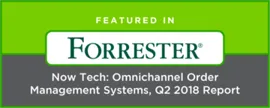

Turn Returns Into New Revenue

BigCommerce Enterprise Order & Inventory Management Software
Since BigCommerce’s 2009 launch, nearly 100,000 stores have earned over $8B through the platform. With BigCommerce running the ecommerce platform technology in the cloud with seamless upgrades, merchants can focus more on the areas they know best – merchandising, pricing, promotion, and product assortment management, to name a few.
This focus has fueled growth for thousands of online merchants. If you’re one of BigCommerce Enterprise’s success stories, you may find that operations that were in perfect sync while generating $5mm in annual revenue can’t keep up anymore as sales pass through the $10mm mark.
Two areas where growth hits operations hardest are also important drivers of your customer satisfaction and profitability:
- Order fulfillment; and
- Inventory management
Order fulfillment and inventory management processes must adapt and change as sales volume increases.
Growth is hard work! And when your business is feeling growing pains, it can be hard to figure out exactly which processes need the most change to help your business scale.
Slash Your Fulfillment Costs by Up to 30%
Cut shipping expenses by 30% and boost profit with Cahoot's AI-optimized fulfillment services and modern tech —no overheads and no humans required!
I'm Interested in Saving Time and Money5 Symptoms of Tired Order Fulfillment and Inventory Management Processes
Through our own work with BigCommerce and hundreds of other merchants, we’ve seen five common symptoms that inform that it’s time to upgrade order fulfillment and inventory management processes:
Symptom 1: Late shipments increase as new sales channels are added
- Fulfillment centers get bogged down with inbound orders from multiple sales channels.
- You don’t have a pulse on which orders are in danger of shipping late – with multiple systems you don’t have a single view of all orders.
Symptom 2: Slower time to market and higher returns
- As the product sku count increases, so does the amount of product information to manage.
- As you add more channels (e.g. online marketplaces), product information must be added to multiple systems in myriad of formats.
Symptom 3: More stock outs or capital tied up in overstock
Your order management system lacks real-time visibility into inventory – e.g. inbound, outbound and in-transit inventory – creating inefficiencies:
- Orders get routed to fulfillment centers or stores that are low on stock, instead of those that have excess inventory.
- Sometimes items appear to be out of stock, but are actually available through different fulfillment centers, drop-ship vendors or brick-and-mortar stores.
Symptom 4: Slower customer service with fewer delighted customers
- As you add channels and fulfillment centers, CSRs have to switch between multiple software applications and business processes to resolve customer questions and complaints. CSRs may also be overburdened by the sheer volume of inquiries or not have streamlined issue escalation processes that are needed at a larger volume company growth stage.
Symptom 5: Unable to offer true omnichannel experiences
- Buying online and returning to a store can a clunky process if your Point-of-Sale software doesn’t have access to the ecommerce orders.
- You may have excess inventory in stores, and you’d like to route ecommerce orders to ship-from-store – but your systems don’t support it yet.
- You may have difficulty managing a buy online, pick up in store (BOPIS) program because your online and store systems don’t communicate very well or in real-time.
Looking for a New 3PL? Start with this Free RFP Template
Cut weeks off your selection process. Avoid pitfalls. Get the only 3PL RFP checklist built for ecommerce brands, absolutely free.
Get My Free 3PL RFP4 Benefits of Adding an Order and Inventory Management Software to your BigCommerce Store
BigCommerce Enterprise Order and Inventory Management Software by Pulse Commerce eliminates these symptoms while enabling scalable growth.
It all starts with a real-time 360-degree view of orders and inventory.
The OMS synchronizes data from your commerce systems, enabling automated business decisions with real-time data. Every order, all inventory, customer history, promotions and product information are centralized within the OMS – so you can process higher order volume across more sales channels and fulfillment options. Benefits include:
1. Better cash flow through higher inventory turns
You can track inventory turns and profitability by vendor, by Sku, or by category. And, you can drill down into this view by store, by channel, or zoom out at the company level.
You can also make smarter purchasing decisions – e.g. ordering items mid-season that you know will sell out before the next purchasing cycle.
2. Faster shipments and reduced costs via intelligent order routing
Deliver orders faster while cutting shipping costs by having the OMS select the order fulfillment center closest to the customer. Shipping costs can be reduced 10% to 20% using this strategy, while shaving a day or more off of delivery times.
Reduce overall cost of inventory by having the OMS route orders to optimize inventory – for example, fulfilling from the store or the fulfillment center with the highest days of inventory on hand.
3. Quicker onboarding of new vendors and products while minimizing errors
Your BigCommerce product information format requirements may be different from those of marketplaces and comparison shopping engines. Entering the same data multiple times in different formats wastes time and increases the error rate.
Pulse Commerce’s Order and Inventory Management for BigCommerce manages that for you. Enter the information once, and then simply map the product content to the various templates once.
4. Better customer support and faster issue resolution
Without an OMS, your CSRs may have to log into multiple systems to handle a simple inquiry. For example, logging in to BigCommerce and a POS to find a purchase record, then your inventory management system to ensure an item is in stock in the fulfillment center or a store and then an email program on when the new stock might be arriving to what locations.
A modern OMS like Pulse Commerce’s provides all of that information in one place, and empowers the CSR to resolve the issue without unwanted switching costs and delays.
Issues are resolved faster. Customers are happier, CSRs are happier, and your CFO is happier too.
You can get a better sense for the financial benefits of an OMS by reviewing our Order Management System ROI Calculator. And, it’s prudent to know that all order and inventory management software are not created equal. You can also gain insight into the pitfalls of a “light” OMS by reading The 9 Deadly Sins of a Light Order Management System.
To learn more about how an OMS can benefit BigCommerce merchants, contact Pulse Commerce Sales to schedule your personalized 1-on-1 demo. If you are a Shopify Plus or a Magento merchant, we have good news for you too.
One of the critical deciding factors when selecting PULSE Commerce was after we evaluated at least a half-dozen leading cloud solutions we found Pulse Commerce to be the best Mid-Market Order and Inventory Management System tightly integrated with BigCommerce that offered all the features and capabilities that we need to scale and support sales through multiple channels, as well as to unify our BigCommerce website, call center and our Point-of-Sale (POS).
We found Pulse Commerce technology to be solid, their professionalism refreshing and technical support super responsive. I feel they are committed to our success which goes beyond just software features and functionality.
~Pat Murray
Director, Congregation of the Sisters of St. Joseph

Turn Returns Into New Revenue

Order and Inventory Management Software for Shopify Plus Brings Zen to the Back-Office
Shopify Plus Order and Inventory Management Software
The Shopify Plus retailer roster is full of inspiring stories of high growth merchants. While every merchant is using the same Shopify technology platform for their ecommerce storefront, their growth stories are all different. Different categories, different merchandising strategies, different marketing and pricing tactics.
As is the case for all other businesses, retailers have to adapt as they grow. Processes that work well at the $5mm annual revenue mark typically begin to break down as retailers approach doubling in size.
High growth typically causes order fulfillment and inventory management processes to buckle under the pressure of higher volume and more complex operations.
Following are the other common growth initiatives that can stretch fulfillment and inventory management processes within an organization – challenges that require a technology upgrade in order to scale.
Slash Your Fulfillment Costs by Up to 30%
Cut shipping expenses by 30% and boost profit with Cahoot's AI-optimized fulfillment services and modern tech —no overheads and no humans required!
I'm Interested in Saving Time and MoneyGrowth Initiative
Addition of new sales channels:
Marketplaces, Brick & mortar stores, Popup Stores
Challenges
Late Shipments and More Returns
- How will fulfillment centers manage inbound orders from multiple sales channels with varying service level requirements?
- How will marketing ensure that product information is consistent across channels, each with its own set of rigid format?
Growth Initiative
Addition of new warehouses and fulfillment centers
Challenges
More Stockouts or Capital Tied up in Overstock
- How will you intelligently route orders to the ideal fulfillment center? Which center has the most inventory? How to maximize the purchase and distribution of stock to maximize return on capital?
- How will you optimize inventory across multiple fulfillment centers? Can you automate this process?
Growth Initiative
Addition of new product categories and suppliers and products
Challenges
Slower Time to Market and Product Information Errors
- Will the old ways of onboarding suppliers and products scale?
- Are you going to take longer to add new products to all your sales channels?
- How will you forecast demand for products you haven’t previously sold? How will you decide how much inventory to purchase?
Growth Initiative
Sales and Volume Growth
Challenges
Slower Customer Service with Fewer First Contact Issue Resolutions
- How many systems must contact center reps log into in order to resolve customer questions?
- Can they view all orders, payments, promotions, pricing and past orders and returns history for the customer – across all channels and fulfillment centers — by logging into one system?
- How quickly can the Rep access all the vital info and is able to act with confidence to resolve the customer’s issue rather than escalate or have customer jump through phone trees?
Growth Initiative
Omnichannel Strategy
Challenges
Systems breakdown between Cross Channels and Data Inconsistency
- How will you enable customers to buy online and pickup/return in store?
- How will you ship from store with your current systems?
- How will CSRs handle multichannel customer requests?
Shopify Plus Inventory and Order Management Software by Pulse Commerce is purpose built to streamline each of these challenges, plus many others.
Looking for a New 3PL? Start with this Free RFP Template
Cut weeks off your selection process. Avoid pitfalls. Get the only 3PL RFP checklist built for ecommerce brands, absolutely free.
Get My Free 3PL RFPWhat is an Enterprise Order & Inventory Management Platform?
At it’s core, the platform keeps important data synchronized across commerce systems – ecommerce website, ERP, Accounting, CRM, Supplier Systems, etc. It maintains a real-time view of all orders, inventory, customers, products, pricing and promotions across all sales channels and fulfillment centers.
This real-time 360-degree view of the business, coupled with intelligent workflows, gives the order and inventory management system powerful capabilities that helps Shopify merchants grow with scale. The platform helps merchants:
- optimize inventory across fulfillment centers;
- orchestrate real-time, automated business decisions that ensure orders are fulfilled accurately and on time;
- synchronize vendor and product and pricing information across systems; and
- empower customer service representatives to resolve customer issues, regardless of the sales channel for the purchase
Shopify Plus and Pulse Commerce together are enabling mid-market merchants like us to deliver stellar omnichannel services and superior customer experiences while improving operational efficiency
~Suresh Chaganti
Vice President (IT), SureFit
Following are just 4 ways you can benefit from adding the Pulse Commerce Order and Inventory Management Platform to your Shopify ecommerce operations:
1. Inventory Management and Optimization
Increase inventory turns by reducing stockouts and reducing overstocks. You’ll gain a real-time view of inventory across all websites, brick-and-mortar stores, warehouses (including Amazon FBA), and fulfillment centers. With that insight available to all of your systems, you can manage operations more efficiently.
- Allocate and track inventory across multiple locations.
- Track inventory turns and profitability by item, sku, or vendor to optimize purchasing.
- Use ‘Days of Stock’ reports to avoid stockouts.
2. Distributed Order Management with Intelligent Order Routing
Ship from the ideal fulfillment center to ship faster, ship cheaper, or increase inventory turns. With knowledge of inventory levels at every location, the Pulse Commerce Order Management System (OMS) for Shopify can send new orders to the optimal fulfillment center. And merchants can choose their criteria:
- Ship faster:
- Sends order to the center closest to the customer.
- Order splitting – The OMS can split an order between 2 or more fulfillment centers to speed up delivery time or to facilitate drop-ship fulfillment.
- Optimize inventory:
- Send the order to the center least likely to run out of an item.
- Ship from a store that is sitting on too much stock.
3. Product Information Management
Onboard new suppliers and products once, and easily synchronize your Shopify store with other systems. Imagine a streamlined onboarding process? Import a new product catalog without incident, edit product information in an intuitive interface, create sales, discounts, and special pricing using flexible pricing rules that accomodate various business objectives, and then syndicate the information to your Shopify ecommerce site, brick-and-mortar stores, and online marketplaces. What can be an error-prone distraction becomes a simple process. Better product information leads to higher conversions, and also cuts down on returns.
4. Customer Service
Give contact center team members access to a single view of all orders, customers, inventory, products and promotions. Give your contact center the tools they need to quickly handle Shopify order and return inquiries. End the days of logging in to an order system, a CRM, and an inventory management software to resolve a single issue. To illustrate, consider a customer purchases an item online, and realizes afterwards that it’s the wrong size. The customer calls the contact center to modify the order. With an OMS, the CSR logs into a single system. Then:
- The CSR can look up the order by customer name, by phone number or by order #
- The CSR can modify the order, after first ensuring that the item is available in inventory
- The CSR can even offer the customer to pick up the modified order at a local store
Without an OMS, the CSR might have to log into more than one order system just to find the order. Then the CSR has to log into a separate inventory system to ensure the item is in stock prior to modifying the order. And, the offer to pick up in a store is near-impossible to manage.
Scaling Made Easy: Calis Books’ Fulfillment Journey
Learn how Calis Books expanded nationwide, reduced errors, grew sales while cutting headcount, and saved BIG with Cahoot
See Scale JourneyWe’ve just scratched the surface of the benefits of a Shopify Plus Order & Inventory Management platform. To learn more about how an Enterprise OMS can benefit Shopify Plus merchants, contact Pulse Commerce Sales to schedule your personalized 1-on-1 demo.
You can get a better sense for the financial benefits of an OMS by reviewing our Order Management System ROI Calculator. And, it’s prudent to know that all order and inventory management software are not created equal. To learn more about the downside of a “light” OMS, read, The 9 Deadly Sins of a Light Order Management System.


Turn Returns Into New Revenue




